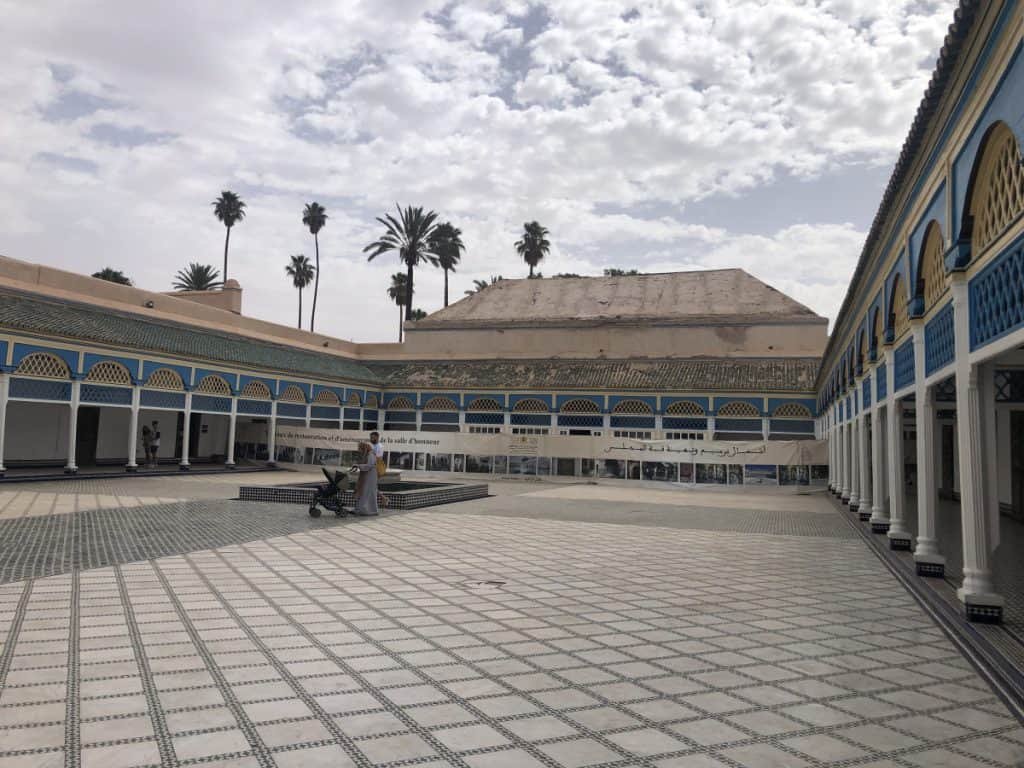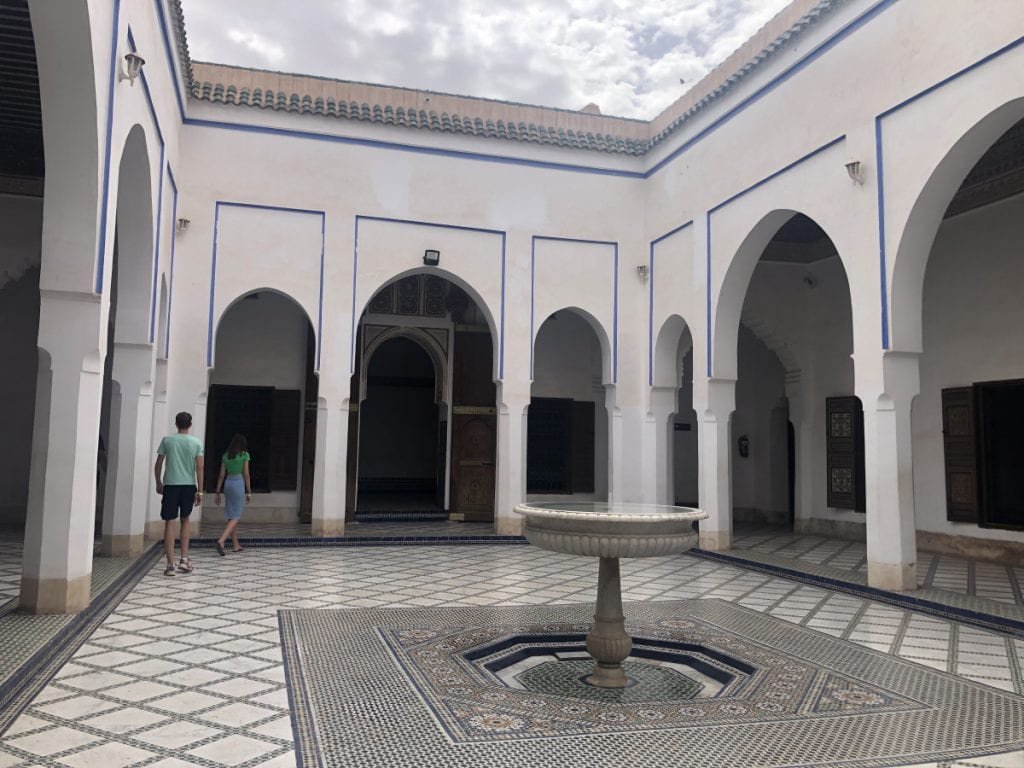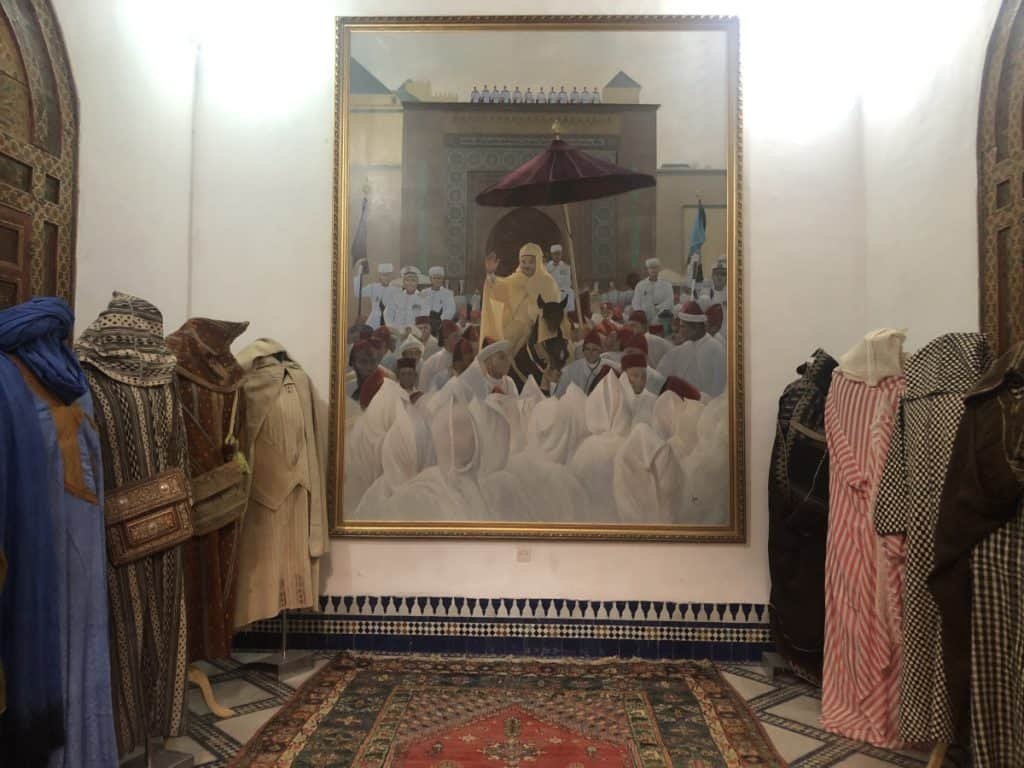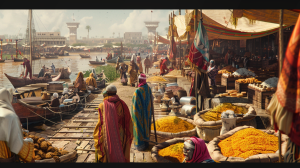Bahia Palace, located in Marrakech, Morocco, is a masterpiece of 19th-century architecture. Built in the late 1800s for Si Moussa, the grand vizier, it exemplifies Moroccan and Islamic design, with intricate mosaics, woodwork, and gardens. It’s a testament to the era’s craftsmanship.

History of Bahia Palace
Emerging from a background of black slaves who were integral to the Moroccan makhzen (royal administration), Si Musa ascended to one of the country’s topmost positions. He started as a hajib (akin to a chamberlain) and eventually served as grand vizier to Muhammad ibn Abd al-Rahman from 1859-1873. He pioneered the palace’s construction in 1859, extending it throughout the 1860s. Presently, the “Grand Riad” garden and nearby rooms, termed Dar Si Moussa, bear witness to Si Musa’s era. Additionally, two main chambers flanking the garden are dated back to 1866-67.
Ba Ahmed ibn Musa, familiarly known as Ba Ahmed, was the hajib to Sultan Moulay Hassan. After the Sultan’s passing, Ba Ahmed ensured Abdelaziz, the Sultan’s son, claimed the throne in 1894, which led to Ba Ahmed’s elevation to grand vizier. Given that Abdelaziz was only sixteen, the governance of Morocco largely fell to Ba Ahmed until his death in 1900. During his rule, he augmented the palace, securing more land as it came up for sale. His siblings, notably Si Sa’id, supported him. Si Sa’id even constructed the Dar Si Said, now a museum.

Ba Ahmed’s architectural legacy predominantly lies in Bahia Palace’s southern expanses, replete with several courtyards and gardens. He also envisioned a sprawling private park to the palace’s east, highlighted by a central water feature and a connecting bridge. Guided by architect Muhammad ibn Makki al-Misfiwi, the palace’s expansion reshaped the local neighbourhood. This growing estate hosted Ba Ahmed’s aides, family, and even slaves. Named “al-Bahia” (meaning “the Brilliant”), it is rumoured to be named after his favoured wife. Intriguingly, given Ba Ahmed’s hefty build, the entire palace was designed ground-level, possibly for easier mobility.

20th Century to today
Transitioning into the 20th century, after Ba Ahmed’s demise, the palace transitioned to royal possession. Rumor has it, Sultan Abdelaziz commanded the palace to be plundered shortly after Ba Ahmed’s death. By 1908, Madani el-Glaoui seized the palace, entertaining international guests and introducing an upper level. Come 1912, under the French Protectorate, the palace transformed into the French resident-general (Lyautey) residence. Post-independence, it briefly became King Mohammed V’s residence before being transformed into a major tourist attraction by King Hassan II’s administration.
Currently, the palace stands as a beacon of Moroccan history and attracts a significant number of tourists. With 410,141 visitors recorded in the first four months of 2019 alone, it’s the nation’s top heritage site. Moreover, the reigning Moroccan king occasionally uses the palace for diplomatic purposes and events.
Architecture of Bahia Palace
The unique and intricate design of the palace, which appears to lack a singular cohesive plan, can be attributed to its gradual expansion in phases over several years. This sprawling estate is peppered with several inner courtyards and riad gardens, which are gardens with a four-part symmetrical design. Surrounding these are various rooms and chambers. Currently, the palace’s expanse covers nearly 2 hectares.
Upon entering the palace from the main street, visitors are greeted with a horseshoe arch doorway. A lengthy garden path then guides one towards the palace interior. A smaller courtyard is the pathway to the Small Riad, which is a square garden intersected by walkways and bordered by intricately designed galleries and rooms. A notable room here is Ba Ahmed’s Council Chamber. Later, Madani el-Glaoui added a second floor to this riad, post Ba Ahmed’s demise.
Adjacent to the Small Riad lies a quaint inner courtyard, fittingly named the Small Courtyard, which is bordered by elaborately adorned rooms. Moving eastwards, you’ll find the Grand Courtyard, an architectural marvel and undeniably the palace’s crown jewel. This expansive area, covered with Italian Carrara marble, is circumscribed by a vibrant wooden gallery. These galleries lead to roughly 80 rooms, speculated to have been for Ba Ahmed’s harem and his concubines. Towards the eastern end, a magnificent hall stands with perhaps the finest artwork in the palace. Historical records place the hall’s construction around 1896-1897. Between the Grand Courtyard and the Large Riad, there’s a private suite that Ba Ahmed crafted in 1898 for his beloved first wife, Lalla Zaynab.

Above the Grand Courtyard, the Grand Riad or Large Riad stretches out. This area, along with the rooms it connects to, represents the palace’s most ancient section, harking back to the era of Ba Ahmed’s father, Si Musa. The grandeur of the riad garden here is accentuated by trees that have withstood time since the 19th century. Two grand chambers on either side further embellish this space, dated back to the 1866-67 period.
Venturing further east from the main palace grounds, remnants of Ba Ahmed’s visionary gardens and parks linger. This included a significant water basin, originating from the Saadian era. Additional extensions south of the palace include a mosque, complete with a minaret, and stables.

When speaking of decor, the palace’s reputation precedes it. With walls adorned with Arabic inscriptions, geometric designs, and more, and floors bedecked with marble and zellij tiles, it’s a visual treat. The vibrant cedar-wood ceilings and decorative doorways stand out. The materials, sourced from all corners of Morocco, include marble from Meknes, cedar from the Middle Atlas, and tiles from Tetouan. Craftsmen from across Morocco were commissioned to bring Ba Ahmed’s vision to life.
Sources
https://theculturetrip.com/africa/morocco/articles/history-of-bahia-palace-in-marrakech-in-1-minute




